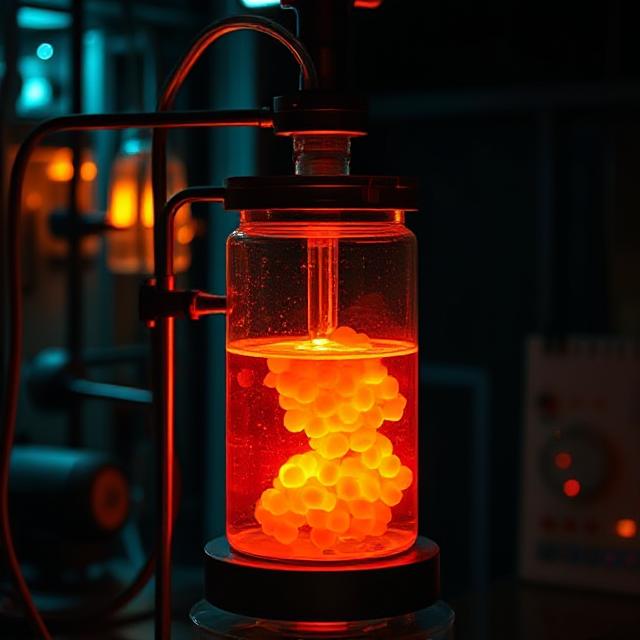Introduction: Fermentation’s Forgotten Twin

In the age of sleek bioreactors, precision fermentation, and gene-edited microorganisms, it’s easy to overlook one of the oldest and most effective fermentation techniques: solid-state fermentation (SSF). Yet, SSF is making a powerful comeback—reimagined for today’s needs in food tech, alternative proteins, biomanufacturing, and even pharmaceuticals.
Unlike submerged fermentation (SmF), which dominates modern industrial bioprocessing, SSF involves the cultivation of microorganisms on solid substrates with minimal or no free-flowing water. This seemingly simple method, long used in traditional Asian fermentation practices (think miso, tempeh, or koji), is now emerging as a low-cost, high-yield, and sustainable platform for modern bioproduction.
What is Solid-State Fermentation?
Solid-state fermentation is a microbial process that takes place on solid materials without free liquid. These solid substrates act as both physical support and nutrient source. Common substrates include:
- Soybeans
- Rice
- Wheat bran
- Cassava peels
- Corn husks
- Agro-industrial byproducts
SSF systems use fungi (especially filamentous ones), yeast, and certain bacteria to metabolize these substrates and produce valuable products such as:
- Enzymes (e.g., amylase, protease, cellulase)
- Organic acids
- Secondary metabolites (e.g., antibiotics, pigments)
- Alternative proteins
- Flavor compounds and fermented foods
Because of its simplicity and compatibility with agro-waste, SSF has recently attracted renewed interest from scientists, food technologists, and sustainability-driven startups.
A Brief History of SSF

While SmF has dominated industrial-scale fermentation since the 20th century due to its ease of automation and control, SSF predates it by centuries:
- Ancient China and Japan: SSF was used in koji fermentation to produce sake, soy sauce, and miso.
- Southeast Asia: Tempeh, a staple food in Indonesia, is made via SSF using soybeans and Rhizopus fungi.
- India: Traditional fermentations for pickles and idli batter utilized mixed cultures on rice and lentils.
What these traditional systems lacked in sterility or mechanization, they made up for in flavor complexity, nutritional value, and robustness.
Why SSF is Making a Comeback
The modern resurgence of SSF can be traced to several converging factors:
1. Sustainability and Circularity
- SSF uses low-cost agricultural waste as substrates.
- Requires minimal water input, reducing processing footprint.
- Often runs without active aeration or agitation.
- Supports localized, decentralized biomanufacturing in low-resource settings.
2. High Yield and Productivity
- Fungi thrive on solid substrates, producing higher enzyme titers than in submerged systems.
- Mycelial structures grow more naturally, allowing for better biomass development.
- High oxygen transfer efficiency due to large surface area.
3. Unique Product Profiles
- SSF can lead to distinct metabolic pathways not seen in liquid cultures.
- Flavor, aroma, and secondary metabolite richness are enhanced.
- Ideal for producing fermented foods, pigments, and aroma compounds.
4. Low-Tech Viability
- Can be set up without stainless steel fermenters or high-tech instrumentation.
- Enables biomanufacturing in regions with limited infrastructure.
- Aligns well with off-grid, low-energy, and developing-world use cases.
SSF vs. Submerged Fermentation (SmF)
| Aspect | Solid-State Fermentation (SSF) | Submerged Fermentation (SmF) |
|---|---|---|
| Water Content | Low moisture | High moisture (aqueous) |
| Substrates | Solid (e.g., rice, bran) | Liquid or soluble carbon sources |
| Microbial Suitability | Filamentous fungi, some yeasts and bacteria | Bacteria, yeasts |
| Oxygen Transfer | Passive diffusion through matrix | Aerated with agitation |
| Cost | Lower | Higher (due to equipment and energy) |
| Scale-Up Complexity | Medium (requires careful thermal management) | High (needs complex reactor design) |
| Applications | Enzymes, fermented foods, mycoproteins | Industrial bioproducts, antibiotics |
Industrial Applications of SSF
Modern SSF is being adopted across industries, often with novel adaptations. Key applications include:
🧬 Enzyme Production
SSF is ideal for producing industrial enzymes:
- Amylases from Aspergillus oryzae
- Cellulases from Trichoderma reesei
- Proteases from Bacillus species
SSF offers better yields for these enzymes, particularly when cultivated on low-cost substrates like wheat bran or soybean meal.
🧫 Alternative Proteins & Mycoproteins

SSF is now used to produce:
- Fungi-based meat analogs (e.g., Meati Foods uses a similar process for mycelium steaks)
- High-protein food ingredients from microbial biomass
- Fermented plant proteins with improved flavor and digestibility
🧀 Fermented Foods and Flavors
Traditional fermented products are seeing modern SSF revival:
- Koji-based seasoning pastes (miso, shio koji)
- Dry-aged plant-based cheeses
- Vegan bacon with koji umami profiles
🌿 Biopigments and Natural Colorants
Filamentous fungi like Monascus purpureus produce:
- Red pigments used in food and cosmetic applications
- Alternatives to synthetic dyes via SSF
💊 Pharmaceuticals and Nutraceuticals
SSF is used to produce secondary metabolites:
- Antibiotics from Penicillium spp.
- Vitamin-enriched biomass (e.g., B12 analogs)
- Functional bioactives like statins and antioxidants
Startups and Innovators Using SSF
A wave of next-gen companies is tapping into SSF’s potential:
1. Prime Roots
- Uses koji (A. oryzae) via SSF to make bacon, pâté, and deli slices
- Flavor-forward approach with culinary partnerships
2. MyForest Foods
- Formerly Atlast Food Co., grows whole-cut mycelium meats using solid fermentation racks
- Focus on sustainability and whole-food nutrition
3. Nature’s Fynd
- Leverages a volcanic fungus (Fusarium strain) in SSF to produce protein-rich breakfast patties and dairy analogs
4. MycoTechnology
- Enhances pea and soy proteins via fungal SSF to improve taste and nutrition
- Adds functional benefits like anti-bitter compounds
Scientific & Engineering Challenges
Despite the promise, SSF poses technical hurdles:
- Heat Build-Up: Without water, heat dissipates slowly, risking microbial inhibition
- Moisture Control: Requires careful balancing of humidity to avoid drying or contamination
- Sterility: Harder to maintain than SmF, especially at scale
- Automation: Less compatible with traditional sensors and control systems
Solutions are emerging via:
- Modular fermentation units
- Smart sensor grids for temperature and humidity
- AI-based process optimization
- Continuous SSF systems with moving-bed reactors
Future Potential: Where SSF is Headed
Solid-state fermentation is poised to play a vital role in decentralized, sustainable biomanufacturing. Looking ahead:
- Urban bioreactors: SSF units in food deserts or megacities
- Space food systems: Low-water fermentation in lunar/Martian habitats
- Disaster relief: Portable SSF units to create high-protein foods from local biomass
- Precision SSF: Genetic engineering of microbes to produce target compounds with SSF systems
Our Conclusions
Solid-state fermentation is no longer just a relic of traditional food making. It is a resurgent platform technology, ready to address the modern world’s demand for low-energy, high-efficiency, and sustainable bioproduction. As climate change pressures global supply chains, SSF offers a localized, modular, and transformative approach to protein, flavor, enzyme, and pharmaceutical manufacturing.
Not just fermentation. Not just tradition. But a renaissance in every sense.
